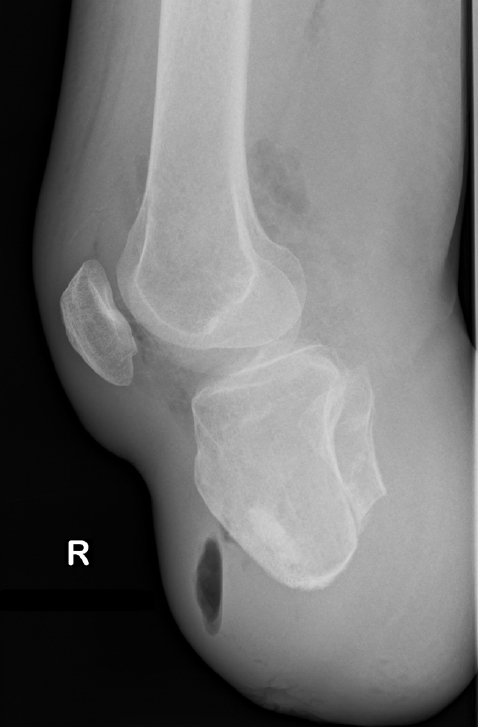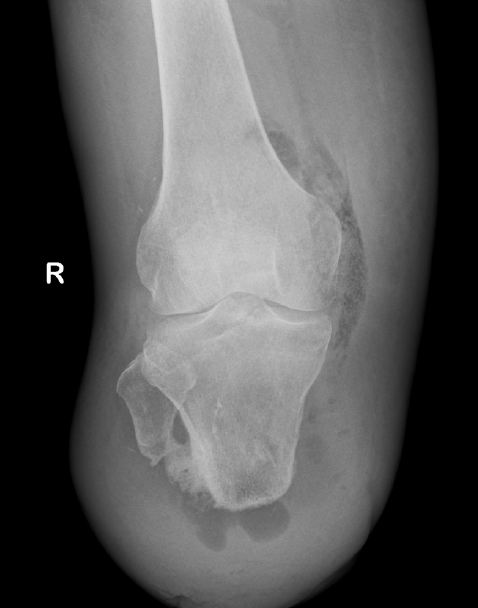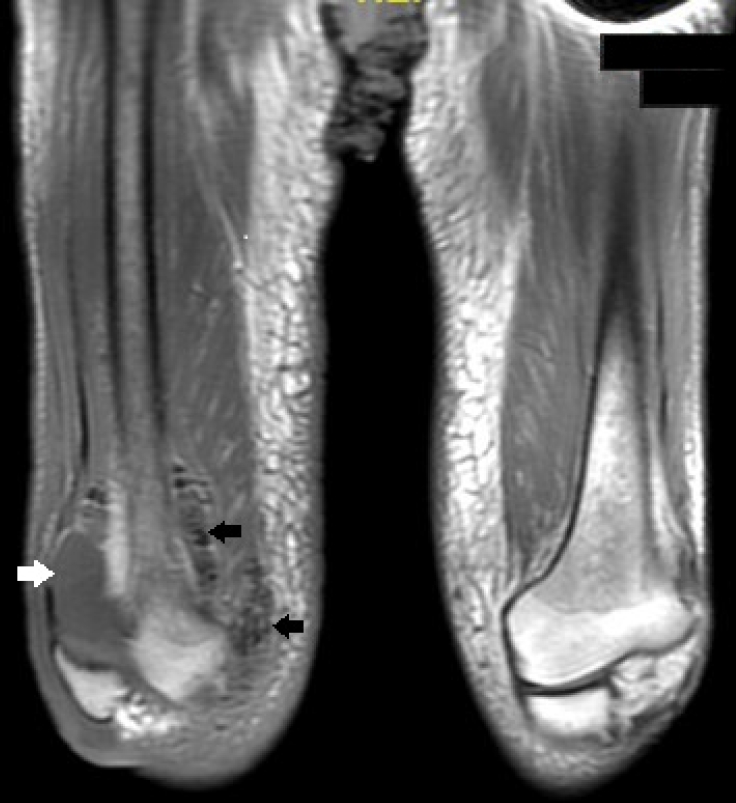Unusual appearance of air in soft tissue on ultrasound
Article information
A 46-year-old male patient with diabetes mellitus and prior right below-knee amputation presented with right thigh swelling and right knee pain for 3 days. Vital signs were temperature of 37.6°C, pulse rate of 96 beats/min, and blood pressure of 131/72 mmHg. His white blood cell count was 19,000/μL, and procalcitonin level was 8.05 μg/L. Bedside ultrasound of his amputation stump showed diffuse ring-down artifacts within an air-fluid collection (Fig. 1 and Supplementary Videos 1, 2), and X-rays of his right knee showed soft tissue gas (Figs. 2, 3). Magnetic resonance imaging showed subcutaneous air-fluid collection, knee effusion, myositis, and cellulitis without necrotizing fasciitis (Fig. 4). Arcanobacterium haemolyticum grew in aspiration sample of his knee. He underwent a right above-knee amputation 6 days after presentation. The patient provided written informed consent for publication of the research details and clinical images.

Bedside ultrasound showing multiple ring-down artifacts (arrows) signifying gas in a fluid collection (star).

Lateral view of knee radiograph showing soft tissue gas and a fluid collection with an air-fluid level.
Gas in soft tissue is abnormal and should prompt the clinician to suspect an infection with gas-forming organisms when there is no trauma. In soft tissues, air commonly appears as echogenic foci with or without shadowing (depending on the amount of air). Air can appear as ring-down artifacts when there are multiple reflections of the ultrasound waves within a tetrahedron of air bubbles [1]. Numerous ring-down artifacts seen on soft tissue ultrasound of the present patient are likely due to a significant amount of air being present in a large fluid collection, resulting in large numbers of bubble tetrahedrons. Clinicians should be aware of this unusual appearance of air in a subcutaneous fluid collection, mimicking the interstitial syndrome on lung ultrasound.
SUPPLEMENTARY MATERIAL
Supplementary materials are available at https://doi.org/10.15441/ceem.22.219.
Supplemental Video 1.
Bedside ultrasound showing multiple ring-down artifacts from gas in a subcutaneous fluid collection, mimicking interstitial syndrome on lung ultrasound. Written informed consent for publication of the video was obtained from the patient.
Supplemental Video 2.
Fluid within a collection can be seen in motion on probe compression. Written informed consent for publication of the video was obtained from the patient.
Notes
CONFLICT OF INTEREST
No potential conflict of interest relevant to this article was reported.
FUNDING
None.
References
Article information Continued
Notes
Capsule Summary
What is already known
On soft tissue ultrasound, air commonly appears as echogenic foci with shadowing.
What is new in the current study
Air within soft tissue can appear as multiple diffuse ring-down artifacts on ultrasound, mimicking the appearance of interstitial syndrome on lung ultrasound.


